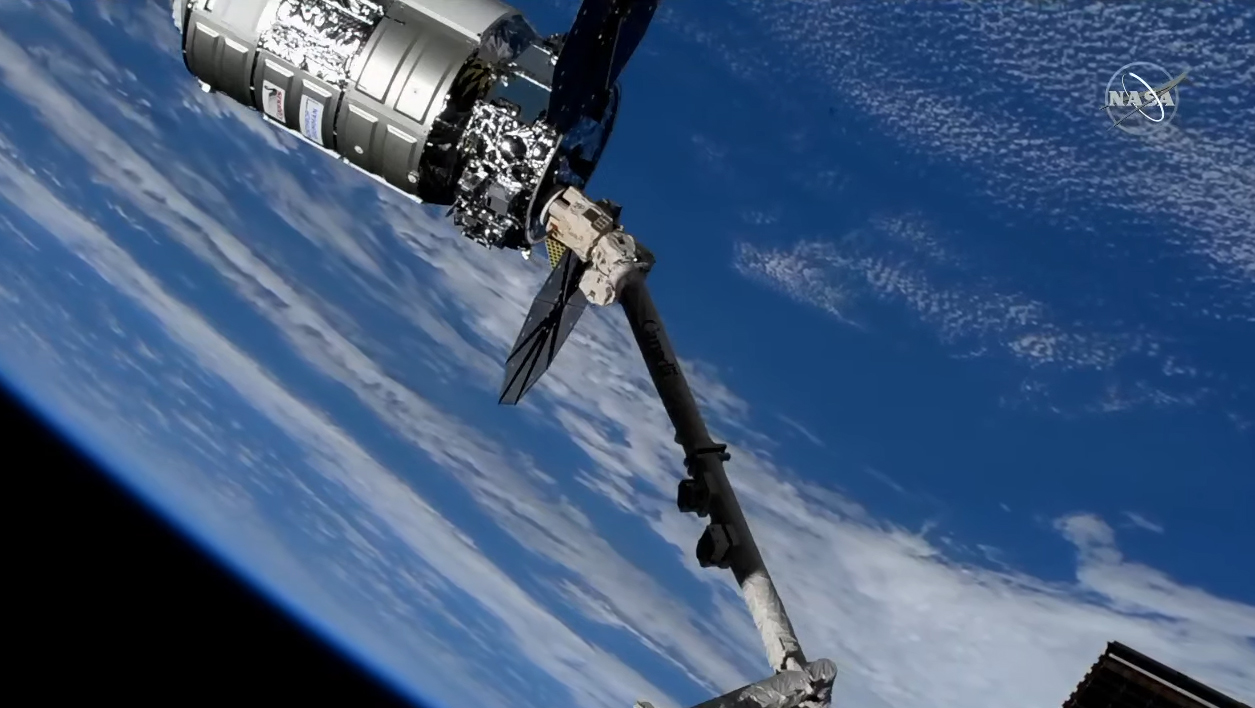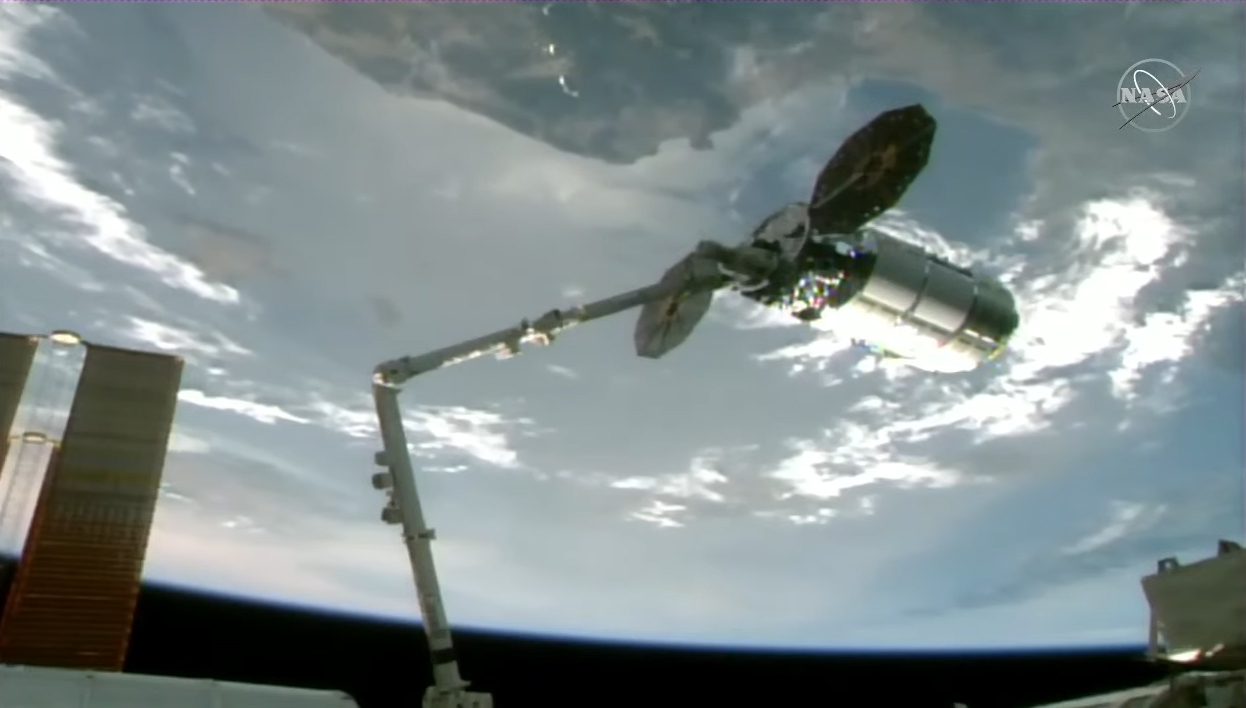Cygnus cargo ship arrives at International Space Station with its biggest NASA haul ever
The Northrop Grumman ship S.S. Ellison Onizuka is packed with more than 4 tons of supplies.
A Northrop Grumman-built Cygnus cargo ship just made its biggest delivery yet for NASA at the International Space Station.
The Cygnus NG-16 vessel was captured by astronauts wielding the station's robotic arm at 6:07 a.m. EDT (1107 GMT) on Thursday as both spacecraft soared over the Atlantic Ocean southwest of Portugal. The Cygnus supply ship was christened the S.S. Ellison Onizuka in honor of the first Asian American astronaut Ellison Onuzuka, who was killed along with six others in the Challenger shuttle disaster in 1986.
"On behalf of the Expedition 65 crew I'm pleased to bring the Cygnus spacecraft S.S. Ellison Onizuka aboard the International Space Station today," NASA astronaut Meghan McArthur radioed to Mission Control after grappling the cargo ship with the station's robotic arm. "This mission enables groundbreaking research through which we hope to meet Colonel Onizuka's challenge to enable the next generation to look out from a higher plateau."
The spacecraft will be attached to an open berth on the station later today. You can watch that live on NASA TV starting at 8 a.m. EDT (1200 GMT).
Video: Antares rocket launches Cygnus NG-16 spacecraft to space station
More: Watch astronauts capture Cygnus NG-16 in space


McArthur captured the spacecraft using the Canadarm2 robotic arm, for guidance to its berthing port on the station's Unity module. Serving as backup astronaut was the European Space Agency's Thomas Pesquet.
Cygnus launched to the space station Tuesday (Aug. 10) from NASA's Wallops Flight Facility in Virginia to deliver more than 8,200 lbs. (3,720 kilograms) of supplies, equipment and experiments for the Expedition 65 astronauts onboard the space station.
Get the Space.com Newsletter
Breaking space news, the latest updates on rocket launches, skywatching events and more!
Related: Blobs in space and other cool science launching to the space station
The delivery includes new hardware, a carbon dioxide scrubber to ensure the crew has breathable air, and equipment for the station's upgraded solar arrays. Among the experiments on board Cygnus are biological payloads, a brainless blob known as a slime mold, and two payloads to examine human muscle cells in space.
Dubbed NG-16, the mission is the 15th operational resupply launch to the space station by Northrop Grumman since 2014, though earlier launches were overseen by Orbital Sciences and Orbital ATK, which Northrop Grumman later acquired. The spacecraft is expected to remain docked at the space station until sometime in November.
Cygnus NG-16 will depart with roughly 8,221 lbs. (3,729 kg) of disposal cargo, according to Northrop Grumman, along with experiments that will be performed as the spacecraft burns up naturally in Earth's atmosphere.
Follow Elizabeth Howell on Twitter @howellspace. Follow us on Twitter @Spacedotcom and on Facebook.
Join our Space Forums to keep talking space on the latest missions, night sky and more! And if you have a news tip, correction or comment, let us know at: community@space.com.

Elizabeth Howell (she/her), Ph.D., was a staff writer in the spaceflight channel between 2022 and 2024 specializing in Canadian space news. She was contributing writer for Space.com for 10 years from 2012 to 2024. Elizabeth's reporting includes multiple exclusives with the White House, leading world coverage about a lost-and-found space tomato on the International Space Station, witnessing five human spaceflight launches on two continents, flying parabolic, working inside a spacesuit, and participating in a simulated Mars mission. Her latest book, "Why Am I Taller?" (ECW Press, 2022) is co-written with astronaut Dave Williams.









